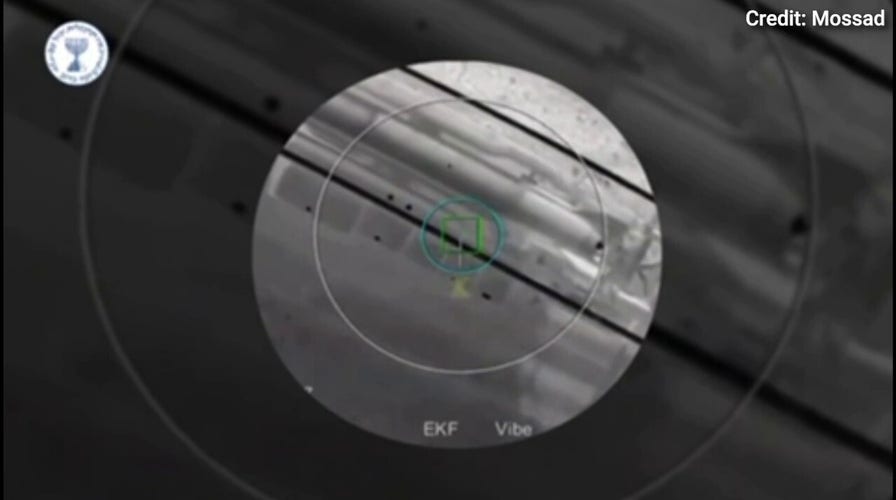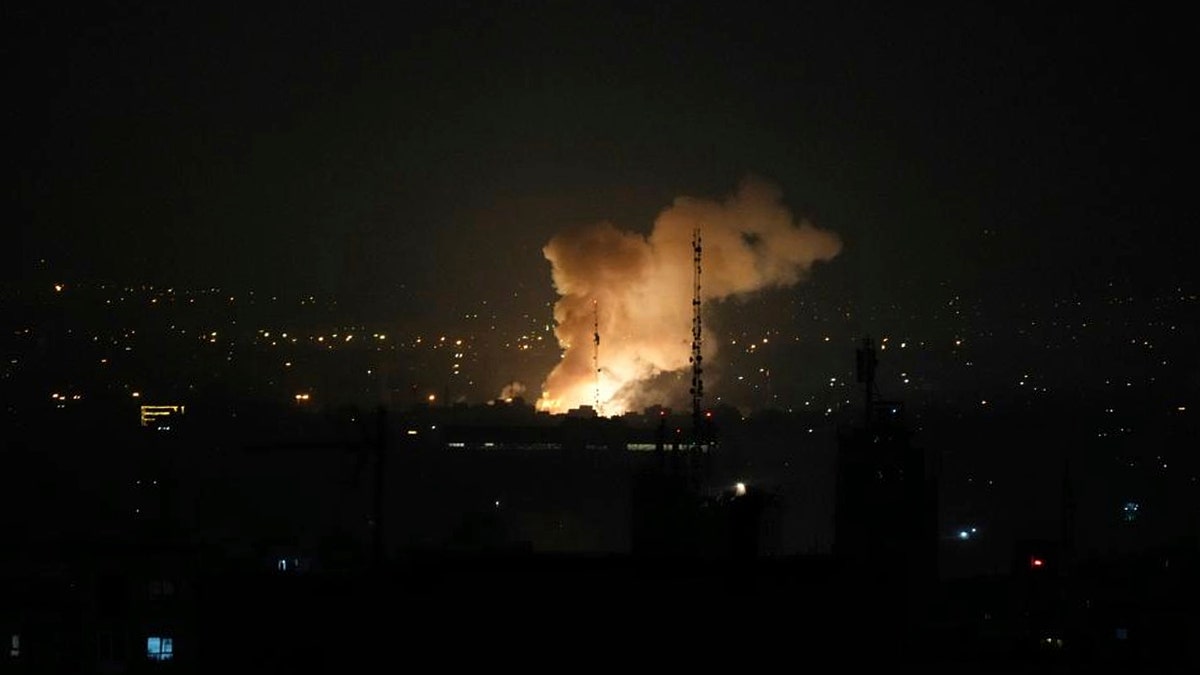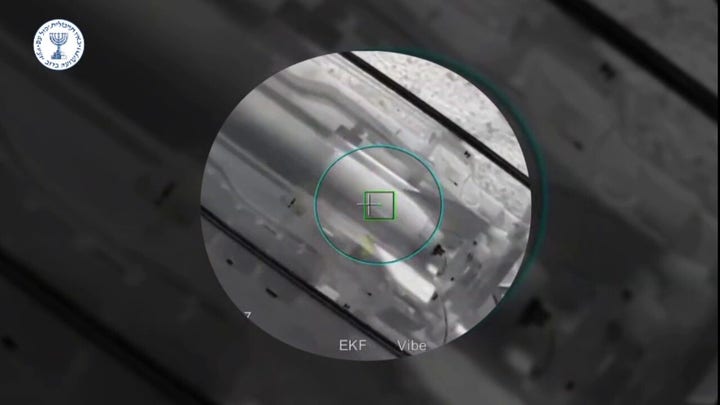close 
Mossad gives rare glimpse at its operations inside Iran
The Mossad published footage of its operatives carrying out covert actions inside Iran prior to Israel’s preemptive attack. (Credit: Mossad)
NEWYou can now listen to Fox News articles!
Israel’s overnight strike on Iran was not only one of the most ambitious aerial campaigns in recent history, it was the result of years of covert planning, surveillance and infiltration by Israeli intelligence.
While dozens of fighter jets bombed nuclear and military targets across Iran early Friday morning, the groundwork had long been laid by Mossad agents working in lockstep with the Israeli military.
Code-named “Am Kelavi” (Rising Lion), the preemptive operation was the product of unprecedented coordination between the Israeli air force, the Military Intelligence Directorate, Mossad and the country’s defense industries. For years, they worked “shoulder to shoulder” to gather the intelligence files needed to eliminate Iran’s most sensitive military and nuclear assets.
ISRAEL SAYS IT TRICKED IRANIAN AIR FORCE LEADERS INTO MEETING BEFORE DEADLY STRIKES
A senior Israeli security official told Fox News Digital, “The Mossad worked with a huge number of people—a mass of agents deep inside Iran, operating at the highest level of penetration imaginable. Some of these agents were retrained as commando fighters to carry out mission-critical operations.”
That work culminated in what the official described as a three-layered strike. “We eliminated vast areas of Iran’s surface-to-surface and surface-to-air missile infrastructure, a massive number of senior scientists, and large portions of their air defense systems.”

“We established a drone base inside Iran, and at zero hour, Mossad operatives retrieved them from hiding spots. We placed precision missiles on numerous vehicles and embedded additional missiles throughout the country, hidden inside rocks. We activated this entire array in precise coordination with the Israeli air force.”
Israeli jets launched simultaneous strikes on dozens of sites, including Iran’s primary uranium enrichment facility at Natanz. Located 1,500 kilometers from Israeli territory, Natanz had long been a critical part of Iran’s nuclear program. Brig. Gen. Effie Defrin, the Israeli Defense Forces spokesperson, described it as an underground compound containing multi-level centrifuge halls and electrical infrastructure.
IRAN CALLS ISRAELI STRIKES A ‘DECLARATION OF WAR,’ SWIFTLY REPLACES KILLED MILITARY LEADERS
“We inflicted significant damage on this site,” Defrin said. “This facility was used by the IRGC to advance Iran’s project for acquiring nuclear weapons.”
Avner Golov, vice president of the Mind Israel think tank, told Fox News Digital, “The biggest success was hitting the Natanz facility and neutralizing Iran’s first wave of retaliation—the automatic response.

Smoke rises after an explosion in Tehran, Iran, on Friday, June 13, 2025. Israel attacked Iran’s capital early Friday with explosions booming across Tehran. (AP Photo/Vahid Salemi)
“We took out their opening move—the ballistic missiles that were meant to launch immediately, and the drones that were already on the way. The fact that scientists were eliminated—that’s the true achievement.”
However, far beyond the airstrikes, Israeli sources revealed that a massive intelligence and sabotage campaign was unfolding in parallel inside Iran. A former senior Israeli official told Fox News Digital, “There was activity inside Iran—an insane level of intelligence work.
“They located the entire command center of the Iranian Air Force. All the commanders were together, and they were taken out in real time.”
ISRAEL RELEASES VIDEO OF STRIKE ON IRANIAN BALLISTIC MISSILES AIMED AT JEWISH STATE

People move past a large banner featuring portraits of slain leaders from Iran-aligned armed groups, including Hamas leader Yahya Sinwar, Hezbollah leader Hassan Nasrallah and Iranian Commander Qasem Soleimani, in central Tehran, Iran, on May 1, 2025. (Photo by MOHAMMADALI NAJIB/Middle East Images/AFP via Getty Images)
According to the same official, Iran’s military had gathered its top air force brass in one facility as part of a publicized drill meant to project deterrence. Instead, it exposed them. “It was partly luck, but also planned—the ability to see them in real time and strike with precision,” he said. “It’s a reminder of what happened in Lebanon—taking out contaminated leadership with surgical intelligence.”
That operation in Lebanon, often referred to as the “pagers” operation, saw Israel infiltrate and sabotage Hezbollah’s command network using Chinese-made radios embedded with explosives. The current operation, Israeli experts say, was broader, deeper, and more strategically impactful.

“I think this is so much more substantial,” said Nadav Eyal, an Israeli journalist and analyst for “Yediot Ahronot” newspaper. “What was done here was much more than the James Bond kind of type of pagers operation. It’s more about the infrastructure, intelligence needed to read devastating strikes on military installations, and the ingenuity of its intelligence services—electronic surveillance, things that it’s been developing for many years now.”
The Mossad’s infiltration campaign involved the quiet smuggling of sophisticated weaponry into Iran, hidden inside vehicles and embedded near strategic targets. In central Iran, precision-guided weapons were planted near surface-to-air missile batteries and launched on command. Disguised vehicles were also used to destroy Iran’s air defense systems at the moment of the strike. Meanwhile, explosive drones positioned near Tehran were activated to destroy long-range missile launchers at the Esfajabad base.
All of it took place under the watch of Iranian intelligence and succeeded without detection.
CLICK HERE TO GET THE FOX NEWS APP
Israeli defense officials now say the mission represents one of the most successful intelligence-military integrations in the country’s history. If the Lebanon pagers stunned the world, the message from this strike is even clearer: nowhere is out of reach.
Efrat Lachter is an investigative reporter and war correspondent. Her work has taken her to 40 countries, including Ukraine, Russia, Iraq, Syria, Sudan, and Afghanistan. She is a recipient of the 2024 Knight-Wallace Fellowship for Journalism. Lachter can be followed on X @efratlachter.
